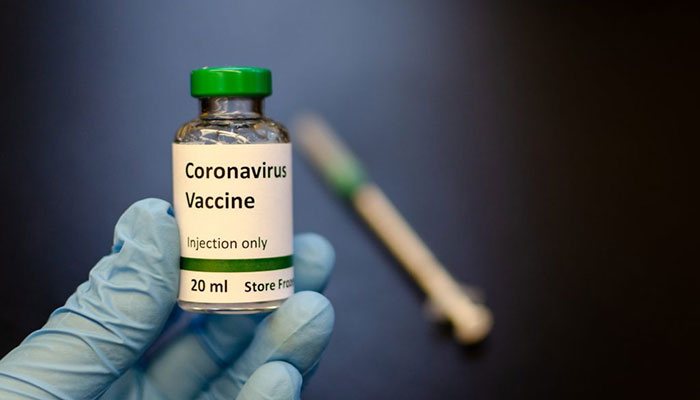Coming up with the coronavirus vaccines has its own sets of challenges
March 29, 2020

As the novel coronavirus continues to spread to almost 200 countries and infect more than half a million people, various companies and researchers across the globe are racing to come up with a vaccine for the virus. The question on everyone’s minds is, when will human beings finally have the cure for the infection?
Chinese scientists were successful in sequencing the genetic material of Sars-CoV-2, the virus that causes the coronavirus. This has led to various research teams across the world to grow the virus and study how it invades human cells to attack the body.
Scientists and researchers had already worked on two other coronaviruses before the outbreak of the severe acute respiratory syndrome (SARS) that caused many deaths in China in 2002-2003 and the Middle East respiratory syndrome (MERS) which spread in 2012. However, work on their vaccines was halted after the two viruses were contained. One company, Maryland-based Novavax, has now re-used the same vaccines the coronavirus. Noavavax says it has several candidates ready to enter human trials this spring.
The coronavirus shares an estimated 80% to 90% of its genetic material with Sars. This is why it is known as Sars-CoV-2. Both viruses have a strip of ribonucleic acid (RNA) inside a spherical protein capsule that is covered in spikes. The spikes allow the virus to lock onto the receptors of the human cells and enter them. It then destroys the reproducing ability of the cell and exits it, before killing the cell completely.
All vaccines have been produced in the same manner. Part of a pathogen is injected into the human body so that our immune systems produce anti-bodies to defend against the virus. Antibodies have been defined as a form of immune memory. This memory, when triggered once, has the ability to mobilise again when the same virus attacks.
Humans have produced vaccines using the same method. Part or the whole of a virus (after being exposed to heat so that it is weakened) is injected into the human body so that antibodies can be produced. However, it does have its side effects as the virus remains in the human body longer, making the host sick. However, as explained in an article by The Guardian, companies are also making use of technology to produce vaccines.
“One more recent strategy – the one that Novavax is using, for example – constructs a “recombinant” vaccine. This involves extracting the genetic code for the protein spike on the surface of Sars-CoV-2, which is the part of the virus most likely to provoke an immune reaction in humans, and pasting it into the genome of a bacterium or yeast – forcing these microorganisms to churn out large quantities of the protein. Other approaches, even newer, bypass the protein and build vaccines from the genetic instruction itself. This is the case for Moderna and another Boston company, CureVac, both of which are building Covid-19 vaccines out of messenger RNA,” read the report in The Guardian.
The process of conducting human trials and tests is done in three phases. First, it involves testing the vaccine on a few healthy human volunteers and then, monitor them for side effects. Phase two consists of testing the vaccine on several hundreds of human beings, typically those who live in the country where the virus has spread. The third phase is conducting the tests on thousands of people.
But there are also problems associated with producing vaccines. For one, it is not possible to produce them in huge quantities. Say some company successfully creates a vaccine that treats the disease. Coming up with it in huge quantities quickly to heal more than a million patients across the globe will be quite difficult.
Then there is the problem of side effects as well. For instance, in the 1960s, a vaccine against respiratory syncytial virus was produced that was found to aggravate cold-like symptoms in children. Medical experts believe a similar vaccine for the coronavirus will have to be tested through stringent safety testing to ensure it does not cause dangerous side effects or diseases.
“Like most vaccinologists, I don’t think this vaccine will be ready before 18 months,” says Annelies Wilder-Smith, professor of emerging infectious diseases at the London School of Hygiene and Tropical Medicine.
The challenges will not end for governments around the globe if and when a coronavirus vaccine is created. The important question then will be: how will the vaccines be distributed among nations, governments, and ultimately, the people?
Take, for instance, the example of the N1H1 flu pandemic. Its vaccines were snapped up by countries that could afford them in huge quantities. Countries that were poor and could not afford the vaccines were left out and their ill suffered.
Or take the example of India, for instance, a nation comprised of more than a billion people. India supplies vaccines in large quantities to developing countries. What if the Indian government decides to treat its patients with the injections first before it decides to export any to other countries?
In conclusion, the world seems so far clueless as to when it will come up with a coronavirus vaccine. Scientists and governments are working on it but it seems clear, according to the opinion of medical experts that once the vaccines are available, the challenges won’t end.











